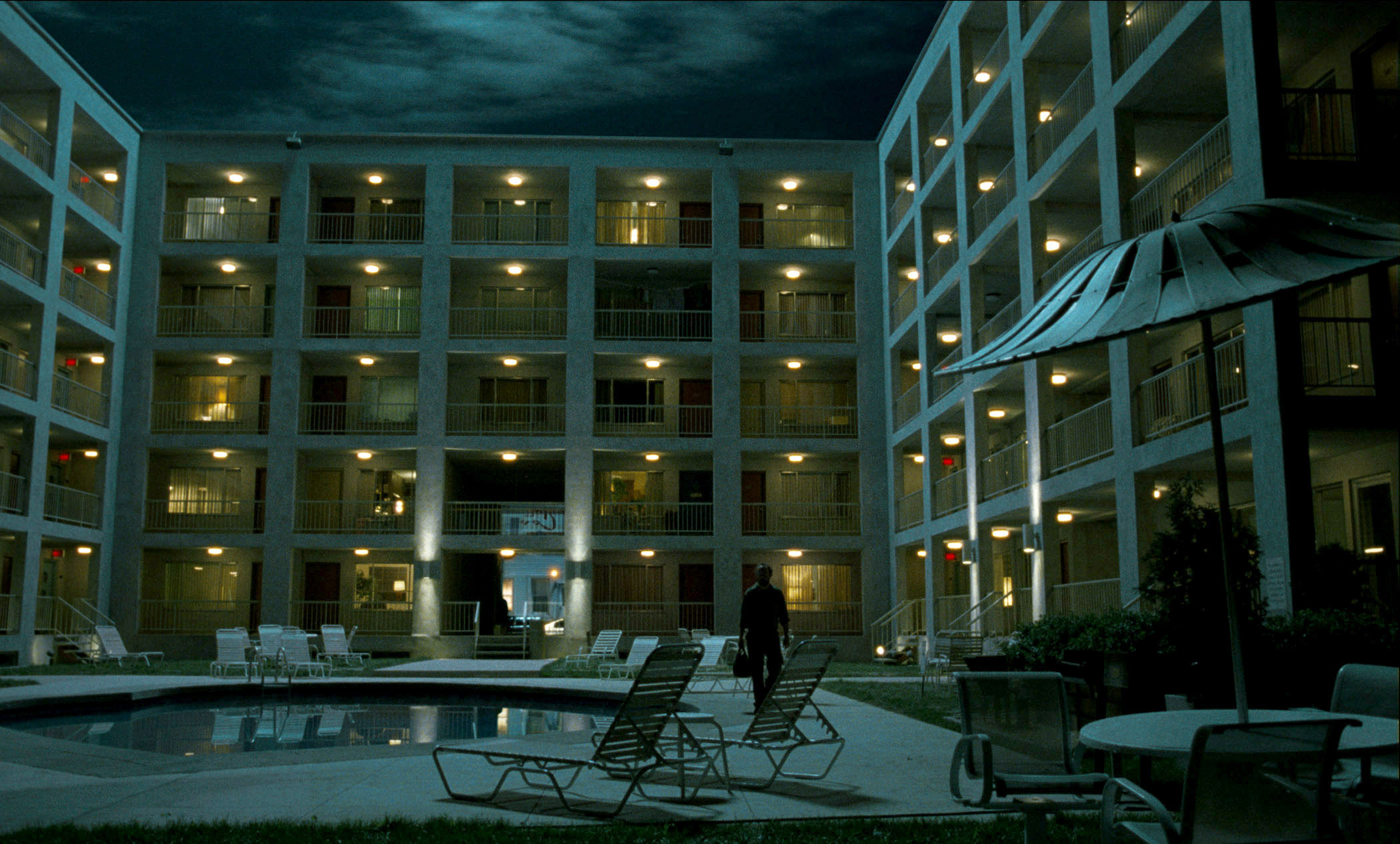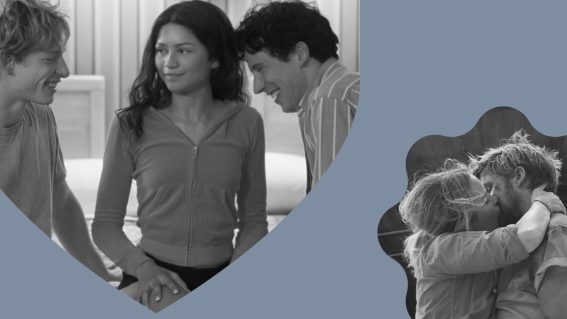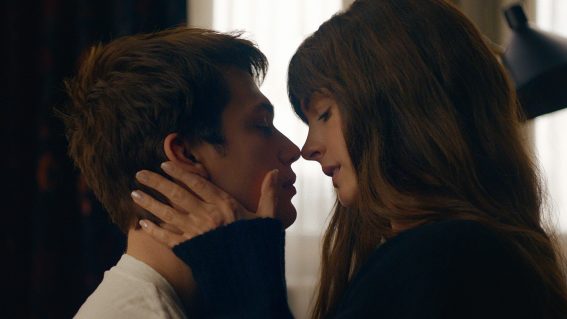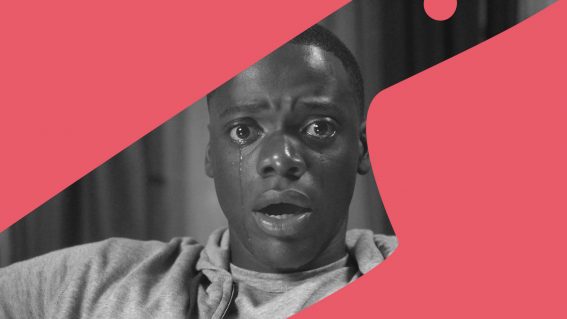Take A Second Look: M. NIGHT SHYAMALAN (Part 2)


Joaquin Phoenix and Bryce Dallas Howard in "The Village"
Last week I started, with some hesitant anxiety, a retrospective look at some of the films of that director that everyone loves to hate: M. Night Shyamalan. Being an ex-Shyamalan fan (that’s right: hardcore fanboy no more!), I wanted to depart from the traditional beatdown bandwagon and examine whether the films from his ‘golden age’ (that is The Sixth Sense, Unbreakable, Signs, The Village and, arguably, The Lady In The Water) were actually as good as I remember them and perhaps even worthy more praise than it has been fashionable to give them. As a reader pointed out last week, one must take into account the ‘horizon of expectation’ of an audience (often shaped by a film’s marketing) and I have posited that it is the fact that Shyamalan’s films fail to meet this expectation that has been the cause of their downfall and not that they are ‘bad movies’ per-say.
One might argue that I’m merely making excuses for the ineffectiveness of his films (and they might be right), but as a filmmaker and industry worker, I personally feel that audiences have been duped into lining up for the Disney/Shyamalan money-wagon (Disney produced all, but one of the films of his ‘golden age’) by promising The Sixth Sense each and every time while Shyamalan had long diverted from that path and had started making very different – though equally interesting and beautifully executed – films that the wrong target demographic ended up paying money to sit through.
Think I’m wrong? Well, let’s continue on our journey.
When you’re a filmmaker or film producer, it is absolutely vital that you match up your film with the right audience. You wouldn’t, after all, try to convince your grandparents to go and watch Michael Bay’s Bad Boys II nor would you expect to be able to convince your ten year old cousin to sit through The Hours or Scent Of A Woman. Movies, by and large, are not made for everyone though sometimes the universe will spit out a film that has true universal appeal where large portions of every demographic might turn up to watch (say for instance the original Star Wars or Titanic). Crossover appeal films are rare not because people don’t want to make them, but because they’re so difficult to make and it takes a really sharp production team and a story that can balance many different elements that appeal to different ages, genders and socio-economic groups to create a truly universal film.
You could, if you wanted to, argue that Shyamalan’s films certainly tried to aim squarely at the demographic crossover zone. The writer/director could have been encouraged by the box-office phenomenon of The Sixth Sense which earned its highest takings from that elusive and mysterious demographic of Women Over 40 (*gasp*) who apparently went to the film in droves and attended repeat screenings over and over again. If one was permitted to draw some rather biased gender analysis, you could say that by combining a genuinely creepy horror/thriller with an emotionally moving plot, Shyamalan had cracked the formula on how to get scary movies to a wider audience. Hence we have the iconic Shyamalan trope that I had discussed last week: Shyamalan movies are one kind of film disguised as another kind of film. Perhaps this was his primary motivation for trying to blend a supernatural thriller with a comic book/superhero movie (Unbreakable) or a sci-fi thriller with a religious parable (Signs) or a ‘monster’ movie with a historical drama about human morality (The Village).
Of course whether or not Shyamalan had successfully ‘cracked the code’, it is apparent that Disney had not interest following his lead. The marketing for Unbreakable makes absolutely no mention that it’s a superhero movie while advertising suggested strongly that the ‘signs’, in the movie with the same name, are the crop-circles that feature early in the film and not the ‘signs from God’ feature much later. Which, for a filmmaker, is sad and frustrating since the former film is now a cult favourite with comic book geeks and the latter a very popular film within the Christian religious community. And as for the The Village…well you could pretty much say that its marketing campaign was an unmitigated disaster from start to finish.
http://www.youtube.com/watch?v=QLT6c8VWSpE&hd=1
The Village is my absolute favourite Shyamalan film and one that made me into an all-too-brief raving fan. It’s a beautiful and masterful work realized in vivid detail and powerful atmosphere, featuring brave and intense performances by a talented cast, all photographed exquisitely by master cinematographer Roger Deakins and set to one of the best musical scores James Newton Howard ever composed (more on this later). As a story, it doesn’t just hint at metaphor but brazenly defines in broad strokes that sometimes threaten to overtake the entertainment value of the film itself. It’s use of psychological tension is – by my personal tastes – astonishingly clever because it plays against the audience’s expectations, leads them down some wonderful false pathways and, in one terrifying sequence, pulls the rug from under your feet so you can really, genuinely be in the head-space of the character who has to fight for their life. The movie is a commentary on society, on the nature of evil, on human failing and the erosion of good intentions by bad or misguided deeds. The film is pretty awesome by my estimate.
But one thing The Village is not…is a horror movie. There’s very little violence in the film, there’s certainly no gore, no people being ripped up or devoured, no fight for survival as a village holds out in an open war against monsters from the forest (trust me, I’m not spoiling the film for you here). Despite what the advertising and trailers may be telling you, the movie is not about monsters…it’s about people. It’s not a scary movie, it’s a drama.
AT BEST, maybe it’s a psychological “thriller”.

One of the (arguably) misleading advertising stills for "The Village",
Oh sure, yes, there are creatures in the story and they do feature prominently in the drama and mystery that unfolds, but they are – like thriller format of Unbreakable and the crop-circles in Signs – nothing more than a ruse. A plot-device crafted by Shyamalan to get you into the story, but play really no important role in what the movie is about or the events that shape the journey its characters go on. If you’ve already seen the movie then maybe you’re feeling some sense of betrayal still when you watch the trailer above and see how much it tries to assure you that you’re in for some kind of fright-fest. It’s no wonder that any die-hard horror movie fan would feel disappointed or perhaps even bored-to-tears by The Village…and that’s basically what happened given the kind of audience who did go to see it and what they had expected to see from the so-called ‘Master of Modern Suspense’. Who wouldn’t feel ripped off if you saw a film that cashed in so much on Shyamalan’s past as a horror/thriller maker and a guy who does over-the-top plot-twists just to get you into the cinema seats before unveiling a story that was completely not what was advertised on the posters outside.
But despite all this, as a stand-alone film without the ‘reputation’ of M. Night Shyamalan, The Village is an incredible little movie. Set in a remote, 19th Century, New England, village surrounded on all sides by a forest inhabited by magical creatures, the story follows socially introverted young blacksmith (Joaquin Phoenix) and the blind daughter (Bryce Dallas Howard) of the village elder (John Hurt) and the forces which threaten to drive their puritan community apart when, after a tragic and life-threatening event, they are forced to send someone through the woods and out to the nearest city for medical assistance. At the same time they fear the retribution of the creatures in the woods who protect their village and their puritan ways from the outside world, but may decide to attack anybody who tries to leave. And that’s the crux of the movie: the people’s relationships in their tiny community and their perspectives on whether their puritan lifestyle could survive the terrible crime that was committed in their village. And I’m not talking about subtext either, THAT IS THE ACTUAL STORY and majority focus of the drama of the film and the movie’s handful of ‘scary’ sequences actually feed directly into this story. Very anti-climatic if you paid your $15 to see another Sixth Sense or a monster-movie, as I’m sure you can imagine.

Adrien Brody and Bryce Dallas Howard in "The Village"
Of course all of this makes sense once you get to the famous Shyamalan-Twist-Ending and, again, you realize you’ve been watching one kind of movie disguised as another. Firstly, I don’t know why people say the ending in unrealistic; it’s actually completely practically feasible and we have real-world examples to compare it with believe it or not. Secondly, yes the ending does put the nail on the coffin on the whole ‘horror movie’ premise of the film so by this point the horror movie fans in the audience are ready to riot for having their time wasted. And it’s such a shame because there is a large audience out there that The Village is made for, but it is unlikely that they really ever got to see it thanks to the mixed critical feedback (mostly citing that the lack of horror and reliance on a twist ending was a major letdown) and the bad word of mouth spread by scary movie fans who had not received their money’s worth. Shyamalan himself famously badmouthed Disney’s marketing of the film and its red-herring focus on the creatures in the film rather than the human drama and this was the first public strike in a war that broke out between the director and the studio until he left the following year.
Shyamalan eventually set up his next project at Warner Bros and Legendary Studios where he was promised, apparently, greater control over the marketing of his products. His next film – The Lady In The Water – proved to be a major milestone for Shyamalan’s hardcore fans: the beginning of the end. Don’t get me wrong, I rather like The Lady In The Water. I think it’s got problems…really strange, weird, wacky problems…but I still regard it as a pretty fantastic and utterly unique film. I can see why many of my fellow fans jumped ship at this point though. First, the movie has no twist ending (imagine my surprise that people were disappointed!). The film’s narrative plays itself pretty straight and while there are mysteries and riddles to be solved in the film, everything comes together as you would expect. Second, the film is yet another step away from Shyamalan’s “horror/thriller” moniker and while it does contain one particularly scary monster, the movie is almost purely a fantasy film for adults.

The massive apartment complex set from "The Lady In The Water"
The concept for “The Lady In The Water” is delightfully brave: an attempt to create a completely original fairytale that takes place in a modern day setting, specifically a low-income apartment complex. The complex is maintained by a nervous and shy handyman (played by the incredible Paul Giamatti) who is haunted by the savage murder of his wife and kids. One night he finds a mysterious, elfen-looking woman (Bryce Dallas Howard) swimming in the pool and she informs him that she is a ‘Narf’ – or a sea-nymph – who has come into the world to bring a message to a man (played by M. Night Shyamalan himself), somewhere in the apartment building. But she is also being pursued by a werewolf-like monster called a ‘Scrunt’ that has also invaded the complex and is trying to kill her. Shyamalan adds a curious push-against-the-fourth-wall element into the film where the characters are forced to become self-aware that they’re in a narrative and thus have to figure out how to help the Narf by breaking down story-structure and their own character archetypes to determine their roles and how the story will ultimately end.
This film got a lot of flak from critics and, for my own part, I believe that the critics derision was a prime instigator for the enormous amount of hate that erupted online for Shyamalan after this film came out. Like Signs, the movie isn’t perfect and it also crosses a major Hollywood taboo of openly mocking film critics (the movie features a comic-relief theater critic character who suffers an unpleasant fate in a somewhat brilliantly devised break-the-fourth-wall sequence). It’s hard to say whether Shyamalan’s inclusion of such a character and his iconic death was meant to be potshots at all the bad reviews he received for The Village, but it is hard to come up with another reason given that his character IS somewhat superfluous given how USEFUL he could have been had he played a larger role in the story. Shyamalan then opens himself up in the firing line by not only playing a major character in the film, but a character who will – literally – become the world’s next Jesus/John Lennon figure. Again you could argue that the guy is just wanting to stretch his acting muscles…but to play that role and a role that is the polar opposite of the cynical critic becomes too much of a coincidence. Shyamalan is tweaking his nose at the people who didn’t like his work and is making metaphor of what he’s trying to do against how it is being received.

Paul Giamatti and (likely) Bryce Dallas Howard's photo-double in "The Lady In The Water"
So once again, despite finally gaining control over the marketing campaign of his next film, Shyamalan missteps and creates controversy outside the context of his own movie and drags it down into the crocodile pit of public derision.
*sigh*
For my part, I had no problem with these elements. I mean, the critic character is great and he’s played by Mr Smug-Face himself Bob Freakin’ Balaban! The guy is hilarious and this is one of his best roles as a severely type-cast actor. The way he guides the tenants of the apartment building to figure out what kind of story they’re all living in is great and his subsequent fate is an absolute hoot for anyone who appreciates good storytelling. As for Shyamalan’s character…I gotta hand it to him, it’s a well-played role. Shyamalan’s performance as an amiable, but reluctant and spiritually lost Messiah is very endearing (and so he should be) and he displays a natural energy and dry wit in this film which is not present in his clunky cameo roles in his other films. So what if he’s going to save the world? Big freakin’ deal. It’s only a problem if you can’t see the character through the guy playing it and if you really can’t get past M. Night’s presence on-screen to enjoy the drama then I guess that’s your loss. I never had that problem and my only concern, for any film, is to judge the quality of the performance and Shyamalan turns in a surprisingly good and even-toned one that doesn’t come across as hammy or syrupy.

Bob Balaban - always the butt of some movie's joke.
So what doesn’t work about this film?
Well, there’s a number of things. The thing that really sticks out to me is Shyamalan’s decision that the mythology of the narfs and scrunts gets passed onto Giamatti’s character by an old Asian lady and her go-go-dancing, club-bunny daughter. The words ‘Narf’ and ‘Scrunt’ contain phonemes that don’t exist in most Asiatic languages, so how could those names be part of a legend that is passed among Asian cultures in the first place? You would think this is a small nitpick, but the club-bunny daughter and her mother figure prominently in the film and every time they try to convince you that it’s an old story passed down through their culture you just get a big flashing alarm going off in your head that makes what you’re hearing impossible to swallow. The film does feature the largest collection of Shyamalan’s famously quirky and off-beat side characters and I guess he wanted to cross the cultural divide this time, but this was just a bad choice all around.
On a larger scale, the film is semi-undermined by its characters becoming aware that they’re in a story because they then spend most of their time trying to figure out what they should be doing rather than just doing things to propel the story forward. Like skimming through a Pick-A-Path or Choose-Your-Own-Adventure game book backwards to find the right route to take, the characters’ quest to find the correct ending to the story result in a very simple and tame plot that doesn’t contain much conflict at all apart from the werewolf-like Scrunt that crops up now and then almost arbitrarily. The film also misses some really prime opportunities for good drama and payoffs which are a little frustrating – the aforementioned Scrunt creature is a pretty tame monster and really poses almost no threat to most of the characters because the plot ensures that the creature can’t physically get to the heroes most of the time. Likewise there’s a host of characters who ought to play a special role in the film’s climax, but don’t – for instance Richie the bodybuilder who only builds up one side of his body: a character trait that has a really obvious and satisfying payoff which Shyamalan doesn’t use at all!
Despite some beautiful moments, gorgeous photography by infamous badboy cinematographer Christopher Doyle, a heartbreaking music score and a terrific performance by Paul Giamatti (whom I’ve loved ever since he was slumming it in computer games in the 90’s), The Lady In The Water was a sizable chink in Shyamalan’s armour thanks to a host of weird, nonsensical choices, a handful of very obvious missed opportunities and his deliberate face-pulling contest against the film critics of the world.
Wow this post is getting huge and I haven’t even talked about The Happening, The Last Airbender or the music of Shyamalan’s films (which is almost worth its own article). Well, this post was part of my ‘Take A Second Look’ series and I seriously don’t want anyone to even take a first look at The Happening or The Last Airbender, so I may have to just save those ones for another occasion. I’m gutted that I can’t really talk about the music of these five ‘golden age’ films, but I hope that if you get the chance to take a second or even first look at these movies you may fall in love with the scores as much as I and so many others have.
I’m going to have to leave it at that. And as always, thanks for reading.













